
Annibale Carracci Painting Reproductions 1 of 2
1560-1609
Italian Baroque Painter
Annibale Carracci (November 3, 1560 - July 15, 1609) was an Italian Baroque painter.
Early career
Annibale Carracci was born in Bologna, and in all likelihood first apprenticed within his family. In 1582, Annibale, his brother Agostino, and his cousin Ludovico Carracci opened a painters' studio, initially called by some the Academy of the Desiderosi (desirous of fame and learning) and subsequently the Incamminati (progressives; literally "of those opening a new way"). While the Carraccis laid emphasis on the typically Florentine linear draftsmanship, as exemplified by Raphael and Andrea del Sarto, their interest in the glimmering colours and mistier edges of objects derived from the Venetian painters, notably the works of Venetian Oil Painter Titian, which Annibale and Agostino studied during their travels around Italy in 1580-81 at the behest of the elder Caracci Lodovico. This eclecticism was to become the defining trait of the artists of the Baroque Emilian or Bolognese School.
In many early Bolognese works by the Carraccis, it is difficult to distinguish the individual contributions made by each. For example, the frescoes on the story of Jason for Palazzo Fava in Bologna (c. 1583-84) are signed Carracci, which suggests that they all contributed. In 1585, Annibale completed an altarpiece of the Baptism of Christ for the church of San Gregorio in Bologna. In 1587, he painted the Assumption for the church of San Rocco in Reggio Emilia.
In 1587-88, Annibale is known to have had travelled to Parma and then Venice, where he joined his brother Agostino. From 1589-92, the three Carraccis completed the frescoes on the Founding of Rome for Palazzo Magnani in Bologna. By 1593, Annibale had completed an altarpiece, Virgin on the throne with St John and St Catherine, in collaboration with Lucio Massari. His Resurrection of Christ also dates from 1593. In 1592, he painted an Assumption for the Bonasoni chapel in San Francesco. During 1593-1594, all three Carraccis were working on frescoes in Palazzo Sampieri in Bologna.
Frescoes in Palazzo Farnese
Based on the prolific and masterful frescoes by the Carracci in Bologna, Annibale was recommended by the Duke of Parma, Ranuccio I Farnese, to his brother, the Cardinal Odoardo Farnese, who wished to decorate the piano nobile of the cavernous Roman Palazzo Farnese. In November-December of 1595, Annibale and Agostino traveled to Rome to begin decorating the Camerino with stories of Hercules, appropriate since the room housed the famous Greco-Roman antique sculpture of the hypermuscular Farnese Hercules.
Annibale meanwhile developed hundreds of preparatory sketches for the major product, wherein he led a team painting frescoes on the ceiling of the grand salon with the secular quadri riportati of The Loves of the Gods, or as the biographer Giovanni Bellori described it, Human Love governed by Celestial Love. Although the ceiling is riotously rich in illusionistic elements, the narratives are framed in the restrained classicism of High Renaissance decoration, drawing inspiration from, yet more immediate and intimate, than Michelangelo's Sistine Ceiling as well as Raphael's Vatican Logge and Villa Farnesina frescoes. His work would later inspire the untrammelled stream of Baroque illusionism and energy that would emerge in the grand frescoes of Cortona, Lanfranco, and in later decades Andrea Pozzo and Gaulli.
Throughout 17th and 18th centuries, the Farnese Ceiling was considered the unrivaled masterpiece of fresco painting for its age. They were not only seen as a pattern book of heroic figure design, but also as a model of technical procedure; Annibale’s hundreds of preparatory drawings for the ceiling became a fundamental step in composing any ambitious history painting.
Contrast with Caravaggio
The 17th century critic Giovanni Bellori, in his survey titled Idea, praised Carracci as the paragon of Italian painters, who had fostered a "renaissance" of the great tradition of Raphael and Michelangelo. On the other hand, while admitting Caravaggio's talents as a painter, Bellori deplored his over-naturalistic style, if not his turbulent morals and persona. He thus viewed the Caravaggisti styles with the same gloomy dismay. Painters were urged to depict the Platonic ideal of beauty, not Roman street-walkers. Yet Carracci and Caravaggio patrons and pupils did not all fall into irreconcilable camps. Contemporary patrons, such as Marquess Vincenzo Giustiniani, found both applied showed excellence in maniera and modeling.
In our century, observers have warmed to the rebel myth of Caravaggio, and often ignore the profound influence on art that Carracci had. Caravaggio almost never worked in fresco, regarded as the test of a great painter's mettle. On the other hand, Carracci's best works are in fresco. Thus the somber canvases of Caravaggio, with benighted backgrounds, are suited to the contemplative altars, and not to well lit walls or ceilings such as this one in the Farnese. Wittkower was surprised that a Farnese cardinal surrounded himself with frescoes of libidinous themes, indicative of a "considerable relaxation of counter-reformatory morality". This thematic choice suggests Carracci may have been more rebellious relative to the often-solemn religious passion of Caravaggio's canvases. Wittkower states Carracci's "frescoes convey the impression of a tremendous joie de vivre, a new blossoming of vitality and of an energy long repressed".
Today, unfortunately, most connoisseurs making the pilgrimage to the Cerasi Chapel in Santa Maria del Popolo would ignore Carracci's Assumption of the Virgin altarpiece (1600-1601) and focus on the stunning flanking Caravaggio works. It is instructive to compare the theologic and artistic differences between Carracci's Assumption and Caravaggio's Death of the Virgin. Among early contemporaries, Carracci would have been an innovator. He re-enlivened the Michelangelo's visual fresco vocabulary, and posited a muscular and vivaciously brilliant pictorial landscape, which had been becoming progressively crippled into a Mannerist tangle. While Michelangelo could bend and contort the body into all the possible perspectives, Carracci in the Farnese frescoes had shown how it could dance. The "ceiling"-frontiers, the wide expanses of walls to be frescoed would, for the next decades, be thronged by the monumental brilliance of the Carracci followers, and not Caravaggio's followers.
In the following century, it was not the admirers of Caravaggio, who would have dismissed Carracci, but to a lesser extent than Bernini and Cortona, baroque art in general came under criticism from neoclassic critics such as Winckelmann and even later from the prudish John Ruskin. Carracci in part was spared opprobrium because he was seen as an emulator of the highly admired Raphael, and in the Farnese frescoes, attentive to the proper themes such as those of antique mythology.
Landscapes, genre art and drawings
On July 8, 1595, Annibale completed the painting of San Rocco distributing alms, now in Dresden Gemaldegalerie. Other significant late works painted by Carracci in Rome include Domine, Quo Vadis? (c1602), which reveals a striking economy in figure composition and a force and precision of gesture that influenced on Poussin and through him, the language of gesture in painting.
Carracci was remarkably eclectic in thematic, painting landcapes, genre scenes, and portraits, including a series of autoportraits across the ages. He was one of the first Italian painters to paint a canvases wherein landscape took priority over figures, such as his masterful The Flight into Egypt; this is a genre in which he was followed by Domenichino (his favorite pupil) and Lorraine.
Carracci's art also had a less formal side that comes out in his caricatures (he is generally credited with inventing the form) and in his early genre paintings, which are remarkable for their lively observation and free handling (see The Butcher's Shop) and his painting of The Beaneater. He is described by biographers as inattentive to dress, obsessed with work: his self-portraits vary in his depiction.
Under a melancholic humor
It is not clear how much work Annibale completed after finishing the major gallery in the Palazzo Farnese. In 1606, Annibale signs a Madonna of the bowl. However, in a letter from April 1606, the cardinal Odoarde Farnese bemoans that a "heavy melancholic humor" prevented Annibale from painting for him. Throughout 1607, Annibale is unable to complete a commission for the Duke of Modena of a Nativity. There is a note from 1608, where in Annibale stipulates to a pupil that he will spend at least two hours a day in his studio.
There is little documentation from the man or time to explain why his brush was stilled. Speculation abounds.
In 1609, Annibale dies, and was buried, according to his wish, near Raphael in the Pantheon of Rome. It is a measure of his achievement that artists as diverse as Bernini, Poussin, and Rubens praised his work. Many of his assistants or pupils in projects at the Palazzo Farnese and Herrera Chapel would become among the pre-eminent artists of the next decades, including Domenichino, Francesco Albani, Giovanni Lanfranco, Domenico Viola, Guido Reni, Sisto Badalocchio, and others.
Early career
Annibale Carracci was born in Bologna, and in all likelihood first apprenticed within his family. In 1582, Annibale, his brother Agostino, and his cousin Ludovico Carracci opened a painters' studio, initially called by some the Academy of the Desiderosi (desirous of fame and learning) and subsequently the Incamminati (progressives; literally "of those opening a new way"). While the Carraccis laid emphasis on the typically Florentine linear draftsmanship, as exemplified by Raphael and Andrea del Sarto, their interest in the glimmering colours and mistier edges of objects derived from the Venetian painters, notably the works of Venetian Oil Painter Titian, which Annibale and Agostino studied during their travels around Italy in 1580-81 at the behest of the elder Caracci Lodovico. This eclecticism was to become the defining trait of the artists of the Baroque Emilian or Bolognese School.
In many early Bolognese works by the Carraccis, it is difficult to distinguish the individual contributions made by each. For example, the frescoes on the story of Jason for Palazzo Fava in Bologna (c. 1583-84) are signed Carracci, which suggests that they all contributed. In 1585, Annibale completed an altarpiece of the Baptism of Christ for the church of San Gregorio in Bologna. In 1587, he painted the Assumption for the church of San Rocco in Reggio Emilia.
In 1587-88, Annibale is known to have had travelled to Parma and then Venice, where he joined his brother Agostino. From 1589-92, the three Carraccis completed the frescoes on the Founding of Rome for Palazzo Magnani in Bologna. By 1593, Annibale had completed an altarpiece, Virgin on the throne with St John and St Catherine, in collaboration with Lucio Massari. His Resurrection of Christ also dates from 1593. In 1592, he painted an Assumption for the Bonasoni chapel in San Francesco. During 1593-1594, all three Carraccis were working on frescoes in Palazzo Sampieri in Bologna.
Frescoes in Palazzo Farnese
Based on the prolific and masterful frescoes by the Carracci in Bologna, Annibale was recommended by the Duke of Parma, Ranuccio I Farnese, to his brother, the Cardinal Odoardo Farnese, who wished to decorate the piano nobile of the cavernous Roman Palazzo Farnese. In November-December of 1595, Annibale and Agostino traveled to Rome to begin decorating the Camerino with stories of Hercules, appropriate since the room housed the famous Greco-Roman antique sculpture of the hypermuscular Farnese Hercules.
Annibale meanwhile developed hundreds of preparatory sketches for the major product, wherein he led a team painting frescoes on the ceiling of the grand salon with the secular quadri riportati of The Loves of the Gods, or as the biographer Giovanni Bellori described it, Human Love governed by Celestial Love. Although the ceiling is riotously rich in illusionistic elements, the narratives are framed in the restrained classicism of High Renaissance decoration, drawing inspiration from, yet more immediate and intimate, than Michelangelo's Sistine Ceiling as well as Raphael's Vatican Logge and Villa Farnesina frescoes. His work would later inspire the untrammelled stream of Baroque illusionism and energy that would emerge in the grand frescoes of Cortona, Lanfranco, and in later decades Andrea Pozzo and Gaulli.
Throughout 17th and 18th centuries, the Farnese Ceiling was considered the unrivaled masterpiece of fresco painting for its age. They were not only seen as a pattern book of heroic figure design, but also as a model of technical procedure; Annibale’s hundreds of preparatory drawings for the ceiling became a fundamental step in composing any ambitious history painting.
Contrast with Caravaggio
The 17th century critic Giovanni Bellori, in his survey titled Idea, praised Carracci as the paragon of Italian painters, who had fostered a "renaissance" of the great tradition of Raphael and Michelangelo. On the other hand, while admitting Caravaggio's talents as a painter, Bellori deplored his over-naturalistic style, if not his turbulent morals and persona. He thus viewed the Caravaggisti styles with the same gloomy dismay. Painters were urged to depict the Platonic ideal of beauty, not Roman street-walkers. Yet Carracci and Caravaggio patrons and pupils did not all fall into irreconcilable camps. Contemporary patrons, such as Marquess Vincenzo Giustiniani, found both applied showed excellence in maniera and modeling.
In our century, observers have warmed to the rebel myth of Caravaggio, and often ignore the profound influence on art that Carracci had. Caravaggio almost never worked in fresco, regarded as the test of a great painter's mettle. On the other hand, Carracci's best works are in fresco. Thus the somber canvases of Caravaggio, with benighted backgrounds, are suited to the contemplative altars, and not to well lit walls or ceilings such as this one in the Farnese. Wittkower was surprised that a Farnese cardinal surrounded himself with frescoes of libidinous themes, indicative of a "considerable relaxation of counter-reformatory morality". This thematic choice suggests Carracci may have been more rebellious relative to the often-solemn religious passion of Caravaggio's canvases. Wittkower states Carracci's "frescoes convey the impression of a tremendous joie de vivre, a new blossoming of vitality and of an energy long repressed".
Today, unfortunately, most connoisseurs making the pilgrimage to the Cerasi Chapel in Santa Maria del Popolo would ignore Carracci's Assumption of the Virgin altarpiece (1600-1601) and focus on the stunning flanking Caravaggio works. It is instructive to compare the theologic and artistic differences between Carracci's Assumption and Caravaggio's Death of the Virgin. Among early contemporaries, Carracci would have been an innovator. He re-enlivened the Michelangelo's visual fresco vocabulary, and posited a muscular and vivaciously brilliant pictorial landscape, which had been becoming progressively crippled into a Mannerist tangle. While Michelangelo could bend and contort the body into all the possible perspectives, Carracci in the Farnese frescoes had shown how it could dance. The "ceiling"-frontiers, the wide expanses of walls to be frescoed would, for the next decades, be thronged by the monumental brilliance of the Carracci followers, and not Caravaggio's followers.
In the following century, it was not the admirers of Caravaggio, who would have dismissed Carracci, but to a lesser extent than Bernini and Cortona, baroque art in general came under criticism from neoclassic critics such as Winckelmann and even later from the prudish John Ruskin. Carracci in part was spared opprobrium because he was seen as an emulator of the highly admired Raphael, and in the Farnese frescoes, attentive to the proper themes such as those of antique mythology.
Landscapes, genre art and drawings
On July 8, 1595, Annibale completed the painting of San Rocco distributing alms, now in Dresden Gemaldegalerie. Other significant late works painted by Carracci in Rome include Domine, Quo Vadis? (c1602), which reveals a striking economy in figure composition and a force and precision of gesture that influenced on Poussin and through him, the language of gesture in painting.
Carracci was remarkably eclectic in thematic, painting landcapes, genre scenes, and portraits, including a series of autoportraits across the ages. He was one of the first Italian painters to paint a canvases wherein landscape took priority over figures, such as his masterful The Flight into Egypt; this is a genre in which he was followed by Domenichino (his favorite pupil) and Lorraine.
Carracci's art also had a less formal side that comes out in his caricatures (he is generally credited with inventing the form) and in his early genre paintings, which are remarkable for their lively observation and free handling (see The Butcher's Shop) and his painting of The Beaneater. He is described by biographers as inattentive to dress, obsessed with work: his self-portraits vary in his depiction.
Under a melancholic humor
It is not clear how much work Annibale completed after finishing the major gallery in the Palazzo Farnese. In 1606, Annibale signs a Madonna of the bowl. However, in a letter from April 1606, the cardinal Odoarde Farnese bemoans that a "heavy melancholic humor" prevented Annibale from painting for him. Throughout 1607, Annibale is unable to complete a commission for the Duke of Modena of a Nativity. There is a note from 1608, where in Annibale stipulates to a pupil that he will spend at least two hours a day in his studio.
There is little documentation from the man or time to explain why his brush was stilled. Speculation abounds.
In 1609, Annibale dies, and was buried, according to his wish, near Raphael in the Pantheon of Rome. It is a measure of his achievement that artists as diverse as Bernini, Poussin, and Rubens praised his work. Many of his assistants or pupils in projects at the Palazzo Farnese and Herrera Chapel would become among the pre-eminent artists of the next decades, including Domenichino, Francesco Albani, Giovanni Lanfranco, Domenico Viola, Guido Reni, Sisto Badalocchio, and others.
35 Annibale Carracci Paintings
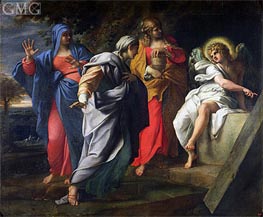
The Holy Women at Christ's Tomb c.1597/98
Oil Painting
$3367
$3367
Canvas Print
$62.80
$62.80
SKU: CAR-9370
Annibale Carracci
Original Size: 121 x 145.5 cm
The State Hermitage Museum, St. Petersburg, Russia
Annibale Carracci
Original Size: 121 x 145.5 cm
The State Hermitage Museum, St. Petersburg, Russia
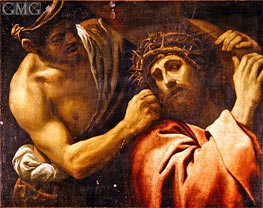
Christ Carrying the Cross n.d.
Oil Painting
$1717
$1717
SKU: CAR-9371
Annibale Carracci
Original Size: unknown
Private Collection
Annibale Carracci
Original Size: unknown
Private Collection
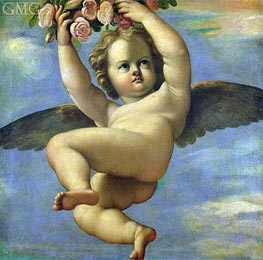
A Cherub Carrying Flowers n.d.
Oil Painting
$1393
$1393
Canvas Print
$75.74
$75.74
SKU: CAR-9372
Annibale Carracci
Original Size: 72 x 72 cm
Musee Conde, Chantilly, France
Annibale Carracci
Original Size: 72 x 72 cm
Musee Conde, Chantilly, France
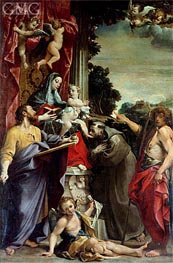
Madonna Enthroned with St. Matthew 1588
Oil Painting
$6945
$6945
Canvas Print
$50.27
$50.27
SKU: CAR-9373
Annibale Carracci
Original Size: 384 x 255 cm
Gemaldegalerie Alte Meister, Dresden, Germany
Annibale Carracci
Original Size: 384 x 255 cm
Gemaldegalerie Alte Meister, Dresden, Germany
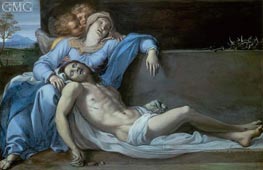
Pieta c.1603
Oil Painting
$1466
$1466
Canvas Print
$51.65
$51.65
SKU: CAR-9374
Annibale Carracci
Original Size: 41 x 60 cm
Kunsthistorisches Museum, Vienna, Austria
Annibale Carracci
Original Size: 41 x 60 cm
Kunsthistorisches Museum, Vienna, Austria
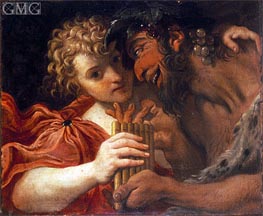
Satyr and Shepherd n.d.
Oil Painting
$1387
$1387
Canvas Print
$49.98
$49.98
SKU: CAR-9375
Annibale Carracci
Original Size: unknown
Galleria Doria Pamphilj, Rome, Italy
Annibale Carracci
Original Size: unknown
Galleria Doria Pamphilj, Rome, Italy
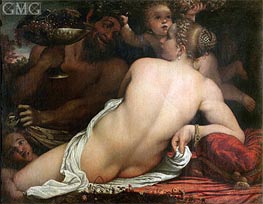
A Bacchante n.d.
Oil Painting
$1592
$1592
Canvas Print
$58.67
$58.67
SKU: CAR-9376
Annibale Carracci
Original Size: 112 x 142 cm
Galleria degli Uffizi, Florence, Italy
Annibale Carracci
Original Size: 112 x 142 cm
Galleria degli Uffizi, Florence, Italy
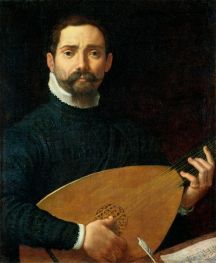
Portrait of a Lute Player c.1593/94
Oil Painting
$1466
$1466
Canvas Print
$62.25
$62.25
SKU: CAR-9377
Annibale Carracci
Original Size: 77 x 64 cm
Gemaldegalerie Alte Meister, Dresden, Germany
Annibale Carracci
Original Size: 77 x 64 cm
Gemaldegalerie Alte Meister, Dresden, Germany
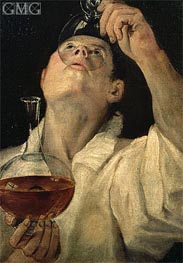
Boy Drinking c.1582/83
Oil Painting
$1241
$1241
Canvas Print
$58.94
$58.94
SKU: CAR-9378
Annibale Carracci
Original Size: 55.8 x 43.7 cm
Cleveland Museum of Art, Ohio, USA
Annibale Carracci
Original Size: 55.8 x 43.7 cm
Cleveland Museum of Art, Ohio, USA
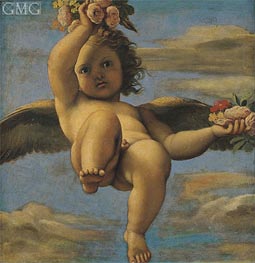
A Cherub Carrying Flowers n.d.
Oil Painting
$1393
$1393
Canvas Print
$75.74
$75.74
SKU: CAR-9379
Annibale Carracci
Original Size: 72 x 72 cm
Musee Conde, Chantilly, France
Annibale Carracci
Original Size: 72 x 72 cm
Musee Conde, Chantilly, France
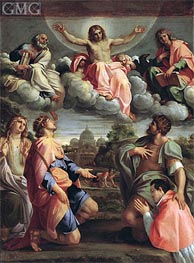
Christ in Glory with the Saints c.1597/98
Oil Painting
$5926
$5926
Canvas Print
$54.40
$54.40
SKU: CAR-9380
Annibale Carracci
Original Size: 194 x 142 cm
Palazzo Pitti, Florence, Italy
Annibale Carracci
Original Size: 194 x 142 cm
Palazzo Pitti, Florence, Italy
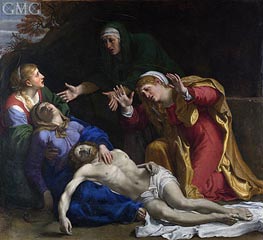
The Dead Christ Mourned (The Three Maries) c.1604
Oil Painting
$3085
$3085
Canvas Print
$69.00
$69.00
SKU: CAR-9381
Annibale Carracci
Original Size: 92.8 x 103.2 cm
National Gallery, London, United Kingdom
Annibale Carracci
Original Size: 92.8 x 103.2 cm
National Gallery, London, United Kingdom
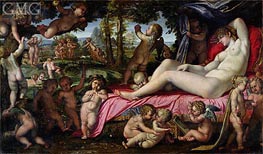
The Sleep of Venus n.d.
Oil Painting
$8132
$8132
Canvas Print
$49.98
$49.98
SKU: CAR-9382
Annibale Carracci
Original Size: 190 x 328 cm
Musee Conde, Chantilly, France
Annibale Carracci
Original Size: 190 x 328 cm
Musee Conde, Chantilly, France
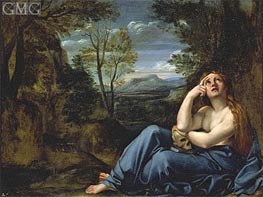
Mary Magdalene in a Landscape c.1599
Oil Painting
$1337
$1337
Canvas Print
$49.98
$49.98
SKU: CAR-9383
Annibale Carracci
Original Size: 32.4 x 43 cm
Fitzwilliam Museum, Cambridge, United Kingdom
Annibale Carracci
Original Size: 32.4 x 43 cm
Fitzwilliam Museum, Cambridge, United Kingdom
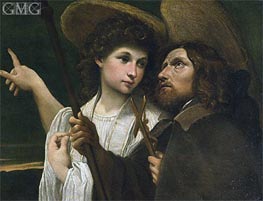
St Roch and the Angel c.1585/89
Oil Painting
$1572
$1572
Canvas Print
$57.57
$57.57
SKU: CAR-9384
Annibale Carracci
Original Size: 62.2 x 81.3 cm
Fitzwilliam Museum, Cambridge, United Kingdom
Annibale Carracci
Original Size: 62.2 x 81.3 cm
Fitzwilliam Museum, Cambridge, United Kingdom

Holy Family (Rest on the Flight into Egypt) c.1604
Oil Painting
$1737
$1737
Canvas Print
$75.74
$75.74
SKU: CAR-9385
Annibale Carracci
Original Size: 82.5 x 82.5 cm
The State Hermitage Museum, St. Petersburg, Russia
Annibale Carracci
Original Size: 82.5 x 82.5 cm
The State Hermitage Museum, St. Petersburg, Russia
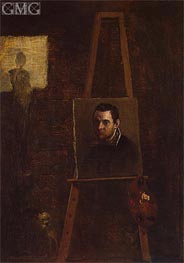
Self-Portrait c.1604
Oil Painting
$1094
$1094
Canvas Print
$49.98
$49.98
SKU: CAR-9386
Annibale Carracci
Original Size: 42.5 x 30 cm
The State Hermitage Museum, St. Petersburg, Russia
Annibale Carracci
Original Size: 42.5 x 30 cm
The State Hermitage Museum, St. Petersburg, Russia
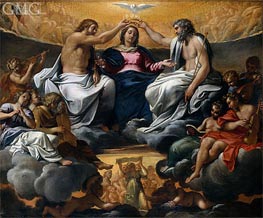
The Coronation of the Virgin a.1595
Oil Painting
$8163
$8163
Canvas Print
$62.94
$62.94
SKU: CAR-9387
Annibale Carracci
Original Size: 117.8 x 141.3 cm
Metropolitan Museum of Art, New York, USA
Annibale Carracci
Original Size: 117.8 x 141.3 cm
Metropolitan Museum of Art, New York, USA
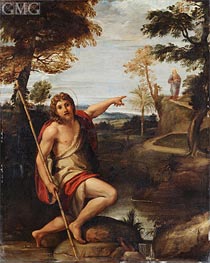
Saint John the Baptist Bearing Witness c.1600
Oil Painting
$1406
$1406
Canvas Print
$59.15
$59.15
SKU: CAR-9388
Annibale Carracci
Original Size: 54.3 x 43.5 cm
Metropolitan Museum of Art, New York, USA
Annibale Carracci
Original Size: 54.3 x 43.5 cm
Metropolitan Museum of Art, New York, USA
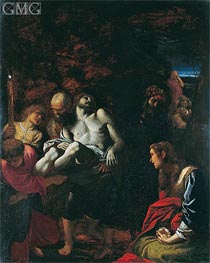
The Burial of Christ 1595
Oil Painting
$1094
$1094
Canvas Print
$49.98
$49.98
SKU: CAR-9389
Annibale Carracci
Original Size: 43.8 x 34.9 cm
Metropolitan Museum of Art, New York, USA
Annibale Carracci
Original Size: 43.8 x 34.9 cm
Metropolitan Museum of Art, New York, USA
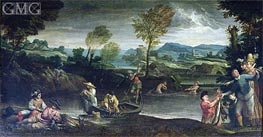
Fishing c.1585/88
Oil Painting
$3047
$3047
Canvas Print
$49.98
$49.98
SKU: CAR-9390
Annibale Carracci
Original Size: 136 x 255 cm
Louvre Museum, Paris, France
Annibale Carracci
Original Size: 136 x 255 cm
Louvre Museum, Paris, France
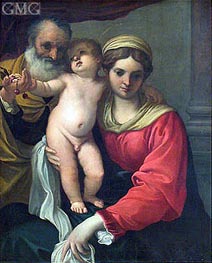
Virgin with Cherries c.1593
Oil Painting
$1717
$1717
Canvas Print
$61.01
$61.01
SKU: CAR-9391
Annibale Carracci
Original Size: 120 x 98 cm
Louvre Museum, Paris, France
Annibale Carracci
Original Size: 120 x 98 cm
Louvre Museum, Paris, France

The Virgin Appearing to St. Luke and St. Catherine 1592
Oil Painting
$5620
$5620
Canvas Print
$49.98
$49.98
SKU: CAR-9392
Annibale Carracci
Original Size: 401 x 226 cm
Louvre Museum, Paris, France
Annibale Carracci
Original Size: 401 x 226 cm
Louvre Museum, Paris, France
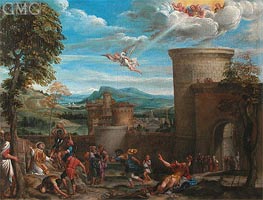
The Stoning of St. Stephen n.d.
Oil Painting
$1735
$1735
Canvas Print
$56.79
$56.79
SKU: CAR-9393
Annibale Carracci
Original Size: 42 x 54 cm
Louvre Museum, Paris, France
Annibale Carracci
Original Size: 42 x 54 cm
Louvre Museum, Paris, France